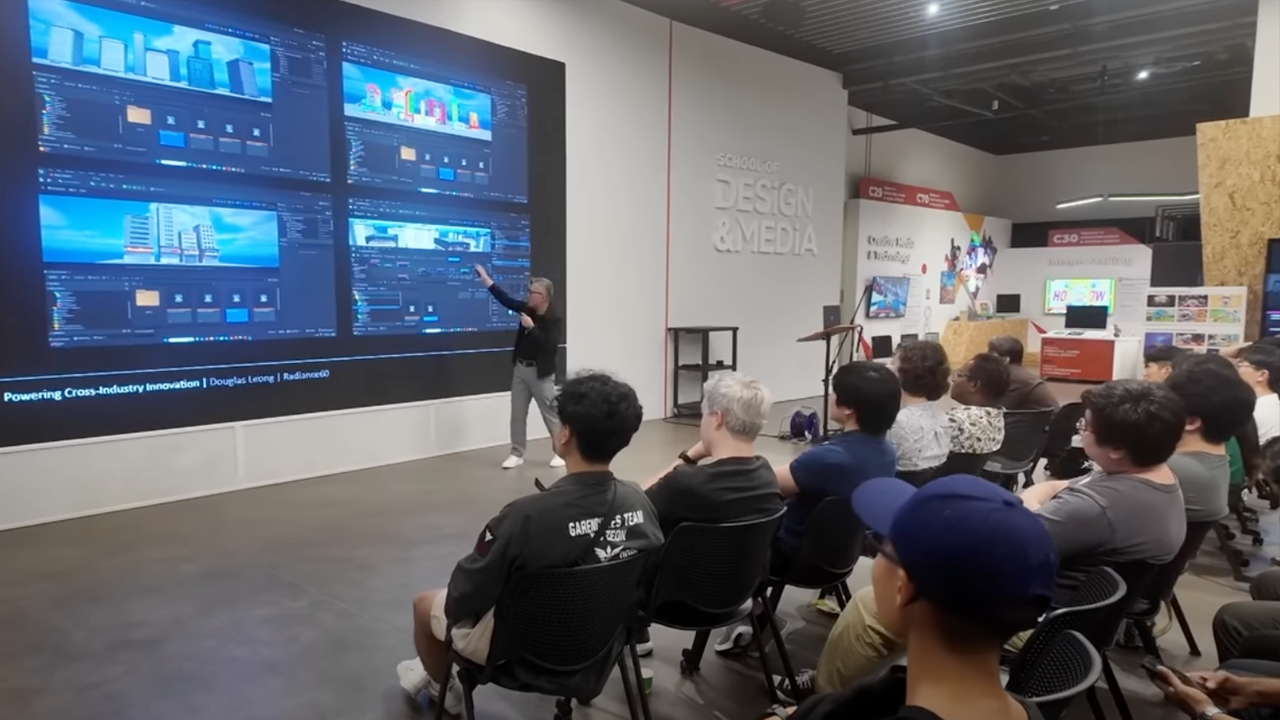
Thanks to everyone who joined us in Toronto for Houdini HIVE Equinox - a multi-day event where the Houdini Community has access to HIVE presentations, hands-on IGNITE workshops and social events.
The HIVE presentation recordings are available below. This offers a wealth of knowledge about how Houdini is being used in the community for many different types of projects. Enjoy!
HIVE PRESENTATIONS | Day 1
Various
Max Rose | SideFX
Filip Orrby & Guillaume Ritt | Goodbye Kansas
David Eschrich & Tim Crowson | Zoic Studios
The Making of “Rocket Boys”: Creating a Full Animated Scene in Houdini 21
This talk walks through the making of Rocket Boys, a six-second competition entry created entirely in Houdini 21. We’ll cover the complete animation pipeline in Houdini, including procedural asset modeling and texturing with COPs, character rigging and animation in APEX, scene layout in Solaris, and lighting and rendering with Karma.
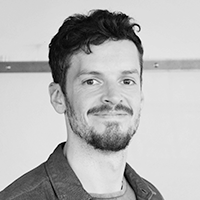
Max Rose got his start in the industry working for a small media company creating interactive exhibits for museums and public spaces. No two projects were the same, and as a result Max cultivated a wide array of skills and interests, but is most passionate about modeling, rigging and animating characters. Now at Sidefx as a Senior Character UX Specialist, Max's mission is to keep 3D animation in where it belongs: in the hands of the artist.
Goodbye Kansas | GoT: War for Westeros
Discover how Goodbye Kansas leverages Houdini’s powerful crowd and CFX tools to bring large-scale cinematic sequences to life.
then go behind the scenes of Goodbye Kansas’ Game of Thrones: War for Westeros trailer, showcasing the studios first use of lighting assembly in Solaris for sequence-based workflows. Next, explore how Goodbye Kansas leverages Houdini’s powerful crowd and CFX tools to bring large-scale cinematic sequences to life.

Filip Orrby has worked in the VFX industry since 2007 and at Goodbye Kansas since around 2014. His focus has been mostly FX work as well as CG supervision and some VFX Supervision.
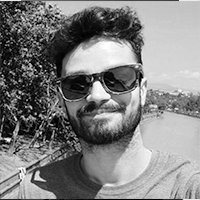
Guillaume Ritt has been a Lighting Discipline Supervisor at Goodbye Kansas for 3 years.
He has worked in the industry for 9 years on different types of projects such as animated series, feature films, VFX and cinematic trailers for video games.
This includes shows and games like Love Death and Robots for Netflix, Secret Level for Amazon, League of Legends trailers for Riot Games, Diablo, Halo etc.
Fast and Fracturous
Learn all about the new RBD nodes in Houdini 21 - RBD Car Fracture SOP and RBD Car Transform SOP. Crashing cars is not just easy anymore, but fast and fun as well. We will go through the CarBD destruction workflow and see how the same concept is transferable to other vehicles.
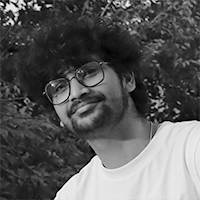
Viswesh Rameshkumar is an intern at SideFX and his daily routine is to crash cars. Destruction FX is his character now and aside from working on the RnD for new RBD updates, he can be found yapping about Indian cinema and exploring what's new in Houdini.
The Great Migration: A Studio's Leap into Houdini
Join us as we share the story of our studio’s transformative journey from a traditional Maya-based pipeline to a largely Houdini-driven one. We’ll explore the challenges we faced, the lessons we learned including our solutions. We'll go over how embracing proceduralism reshaped our creative process, team dynamics, technical capabilities, and how it's even enhancing workflows outside of Houdini. Lastly, we'll discuss our move into USD in Solaris and Karma.

David Eschrich is the Global Head of 3D at Zoic Studios, where he brings a deep understanding of the visual effects pipeline to his leadership role. With a background spanning modeling, lookdev, lighting, grooming, and environment creation, David takes a multidisciplinary approach to problem-solving, always favoring procedural solutions when possible. He has served on the Television Academy SVFX Peer Group Executive Committee and as Co-Chair of the VES New York Section. A VES and Emmy nominee, David is passionate about optimizing workflows and is known for diving deep into both technical and artistic challenges to uncover creative, efficient solutions.
Flow States: Art, Nature, and Procedural Play
As visual artists working across art, science, and technology, we use Houdini to simulate the complexity of natural systems, from cellular structures to shifting landscapes. More than a tool for animation, Houdini shapes how we think. It helps us explore emergence, transformation, and interconnectedness. In this talk, we’ll share how these ideas inform both our creative process and how we bring them to life, from large-scale physical sculptures to immersive digital installations.
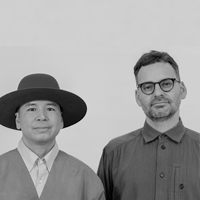
Tin & Ed are Australian artists based in New York. Their work spans installation, sculpture, and digital media, often inviting audiences into playful, sensory experiences that explore our connection to the living world. Through shifts in scale, material, and perspective, their projects reimagine how we see and relate to the world around us. They have exhibited at MoMA, the Getty, and the Barbican Centre, and have collaborated with Apple, Hermès, and Nike.
AutoBake: Automated Groom Animation Pipeline for Feature Film
When working on an Animation movie with a lot of furry characters and a limited number of CFX Artists you will quickly want to keep the artists' focus on Groom dynamics of hero characters and automate as many as possible characters in order to deliver the movie in the deadline. This is why the AutoBake system was built at TAT Studio, to automate an optimized and hight-quality Groom animation without dynamics, in order to keep artists focus on dynamics part.
Together we will breakdown the technical bricks used to build the AutoBake system inside of Houdini using many of it's technical aspects and pipeline building tools.
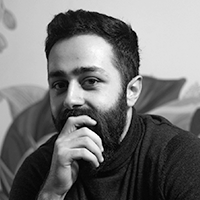
Obeida ZAKZAK works as a Houdini Pipeline Supervisor for Animation films at TAT Studio, covering a lot of technical aspects in Houdini, with big focus on Groom, CFX and FX workflows. Graduated from ENSEEIHT Engineering School in Toulouse with a Computer Science Engineering Degree. Joined TAT Studio as a Pipeline Development Intern and worked as a Houdini Technical Artist once graduated, then became a Pipeline Supervisor focusing on Houdini workflows in the studio.
HIVE PRESENTATIONS | DAY 2
Jakob Ringler | Freelance
Dreaming in Fur and Feathers:
Crafting the Creatures of The Sandman
Josée Chapdelaine | Rodeo FX
Alexandre Tamisier | SideFX
Filippo Robino & Marco Provitina | Alps Studios Srl
Alex Hamer | SideFX
Sebastian Knoll | Netflix Animation Studio
Tom Gofelli | SideFX
Mykyta Berezin, Darren Lesmana, Viduttam Katkar & Ryan Ng | WeFX Studio
Building ML Volume Upres
Get a hands on introduction of ML in Houdini 21 and dive into a case study on how the new tools enable simplified training workflows. Learn how to approach a project like ML Volume Upres as an end to end solution inside of Houdini.
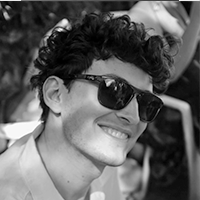
Jakob Ringler is a freelance TD & Digital Artist based in Berlin, Germany. He worked at SideFX as an FX Intern and in the VFX industry as an FX TD before. Fascinated by the intersection of film, design and tech he stumbled into the world of RND, where he is currently exploring the use cases of machine learning for CG.

COMING SOON!
Dreaming in Fur and Feathers: Crafting the Creatures of The Sandman
Josée Chapdelaine, Head of Creature FX at Rodeo FX, takes us behind the curtain of Netflix’s The Sandman Season 2. She explores the artistry and technical challenges of procedural workflows developed by her team to handle large-scale fur, feather, and grooming challenges across multiple sequences. From building efficient systems to manage countless strands and feather variations, to developing scalable muscle and skin simulations that adapt to performance, Josée will share how Rodeo FX approached the design, build, and integration of these hero assets. This session is a deep dive into the fusion of creativity and technology that lies at the heart of cutting-edge creature FX.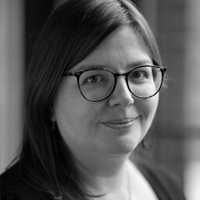
Josée Chapdelaine started in the VFX industry a bit later than most. Though she began her academic career in French Literature, she went back to get a Bachelor in Interior Design and discovered a passion for 3D software in creating interior renderings. After graduation, she went right back to school to get a Bachelor in 3D Animation then promptly got hired by Oblique FX in Montreal where she was mainly doing FX and rigging. With the studio being small, she ended up touching a bit of everything and after 5 years there, she got a job at Rodeo FX, first as a CFX artist, then as a CFX lead, then as a CG Supervisor. Since the beginning of 2021, she’s been back on the CFX side as Head of the Creature FX Department and loving every minute of it.
COP Pyro: Rethinking Smoke Simulations
Discover Houdini’s new COP Pyro solver, a GPU-accelerated method for simulating smoke.
This session covers how Pyro Blocks operate inside Copernicus, whether sourcing density and temperature directly in COPs or from SOPs—and how buoyancy and shaping operators can be layered to drive motion.
We’ll also look at Live Simulation for real-time feedback and show how COPs Pyro can be combined with traditional SOP workflows to open new creative possibilities.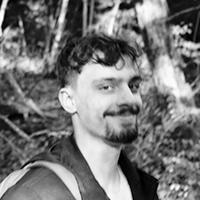
Alexandre Tamisier is an FX Intern at SideFX Software and a self-taught Houdini artist from France.
After freelancing for several years in motion design and high-end advertising, he moved to Toronto to work at SideFX.
His work blends procedural workflows with a sense of lighting and colors, weaving together simulation and artistic exploration.
Around The Moose
The presentation will show the Alps' Moose project, a production-level full CGI shot covering the best features of Houdini. It includes different FX elements, Environment, Rigging in Apex, Animation, Muscle Simulation, shading and lighting.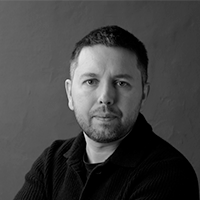
Filippo Robino is the founder and CEO of Alps Studios, a boutique VFX studio located in Turin, in the north of Italy. Since opening it's doors in 2019, Alps has worked on over 40 feature films and episodic TV shows, as well as several high quality commercials, game cinematics, documentaries and music videos for international clients. Filippo has been nominated for a David di Donatello Award for Best Visual Effects in 2023 for his work on Dampyr. Filippo got his start in VFX by studying Graphic & Virtual Design at the Polytechnic University of Turin. He then pursued a private master program at the Virtual Reality & Multimedia Park in Turin. ____
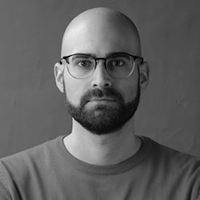
Marco Provitina completed his bachelor’s degree in Computer Engineering at the University of Pavia in 2017 then shifted his studies toward 3D graphics, driven by a love for cinema and the need for creative expression. What excites him most is how this field blends technical knowledge with artistry, allowing him to draw on his background in computer science while pursuing a deeply creative practice. Discovering Houdini was a turning point: its power and flexibility, unmatched by any other software he had tried before, revealed to him a space where he could fully express his creativity. As he continues to study Houdini, he has found himself increasingly drawn to FX and 3D environment development, which have become the core of his artistic and professional interests.
How to build your own Solver!
Take a trip into Copernicus, learning about the existing new Solvers as well as the fundamentals of building one. See examples of constructing basic solvers to create complex effects quickly. Go on a deep dive into building the new Reaction-Diffusion Solver and explore the basics of OpenCL.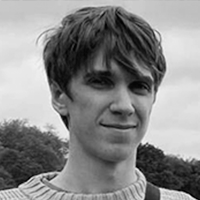
Alex Hamer is currently an Image Processing Technical Director at SideFX, working on Copernicus. Having come from a games background, he has a love for solving interesting problems, creating trippy images, and breaking Houdini.
A Look Under The Hood(ini) at NAS's Assets Pipeline
Over the past few years, Houdini's adoption in Netflix Animation Studio's (formerly Animal Logic) Assets pipeline has steadily increased. From migrating established workflows to a new software package and paradigm, to designing completely new systems to tackle creative challenges, we've made plenty of discoveries along the way. Some decisions have established themselves as core parts of our artists' daily work while others are still evolving. Join us as we share some of the lessons we've learned by looking at what we've built.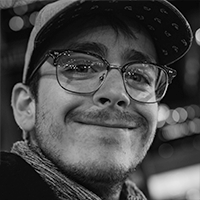
Sebastian Knoll is a Lead Procedural Assets & FX TD at Netflix Animation Studios with experience in feature animation, VFX, and advertising. Starting out as a 3D Generalist, he transitioned into his role as Technical Director to solve challenges that hinder creativity after encountering unnecessary roadblocks in productions. Since then, his work has focused on designing procedural solutions and intuitive tools that allow artists to focus on their craft while empowering technical artists to explore and express new ideas.
Ragdolls : Not The Cats
Learn how the Animate State makes characters ragdoll. Explore ways to set up characters for ragdoll. Discover some behind the scenes of the APEX Animate State and how it leverages APEX to execute complex programs. 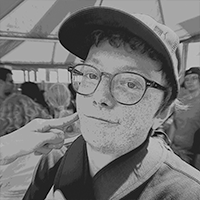
Tom Goffelli is the kinda guy who spends 3 hours with his friend trying to come up with a clever bio and ends up writing about pigs, huffing paint and owning Taylor Swift merch. When he isn't struggling to write his bio, he works in RnD at SideFX. But really, he just lies awake at night trying to come up with a good bio.
How to Tear a Building in Half from the Inside Out
"The Institute" Season 1 features a complex sequence that involved tearing a building half seen both from the outside, and the inside of the building. The team from WeFX will explore the challenging aspects of this sequence including staging of heavy sims, matching on-set destruction, handling a lot of cracks and dust emission and how we adopted Solaris to light and render this tough sequence in a short amount of time. 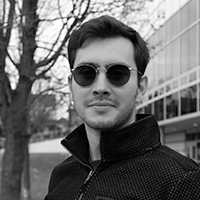
Mykyta Berezin is an FX artist at WeFX Studio in Toronto. With expertise in FX, 3D modeling, texturing, and rendering and with a background in broadcast, and motion design, he demonstrates a strong commitment to artistic pursuits. Mykyta specializes in creating both realistic and abstract simulated and procedural visual effects. He is currently focused on exploring automation and optimization techniques to produce desired effects more efficiently while maintaining a high degree of artistic control and flexibility.
Darren Lesmana is an FX Artist currently working at WeFX Studio, specializing in creating high-end visual effects for film and television. With expertise in procedural effects, particle simulations, fluid dynamics, and complex destruction work, he combines technical precision with artistic vision to bring cinematic worlds to life. Darren thrives in collaborative environments, working closely with other departments to craft seamless, story-driven effects that elevate the final image. Always exploring new techniques and pushing the boundaries of Houdini and industry tools, Darren is passionate about delivering work that inspires and captivates audiences.
Viduttam Katkar is a Senior Lighting Technical Artist with over 9 years of production experience in the VFX industry and credited on numerous films and TV shows such as House of the Dragon, Vikings, The Boys and Halo. He is currently the Lighting Pipeline Supervisor at WeFX in Toronto, where he works on timely delivery of high quality renders and upholding the quality and consistency across the lighting department. He also works on building tools and workflows for the Lighting and Rendering aspects of the pipeline. He is a professor for the Visual Effects program at Seneca Polytechnic, mentoring and inspiring students to learn Lighting, Rendering and Look Development.
Ryan Ng is an experienced Visual Effects Supervisor with expertise in Houdini, procedural workflow, team management, and artist-focused pipeline development, delivering high-end VFX for clients like Prime Video, Disney+, and Netflix. Recognized for creating collaborative, efficient environments that elevate quality across high-profile film and TV productions.
From Desktop to Cloud: Houdini with Aurora on AWS
Aurora is a free, open-source project from SideFX, AWS, and Bismuth that makes it easy to run Houdini in the cloud using Docker, Terraform and Packer. Whether used out of the box or as a foundation for building custom pipelines, Aurora streamlines deployment on AWS and empowers teams to scale their workflows with confidence. In this session, we’ll introduce Aurora and showcase GEOS from Arkwiz as a real-world success story built on this framework.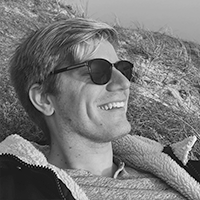
Paul Ambrosiussen is a freelance Senior Technical Artist at Bismuth Consultancy, specializing in procedural content generation, pipeline development, and the use of machine learning in creative production. He works extensively with tools like Houdini and Unreal Engine to build scalable solutions for studios. Previously, he led tool and workflow development at SideFX Labs, collaborating with teams across games, film, and tech. Paul thrives on solving complex pipeline challenges, prototyping experimental workflows, and bridging the gap between artistry and technology through talks, workshops, and community-driven initiatives.
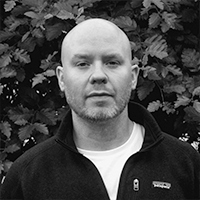
Tore Holmem is the CEO of Arkwiz and the creator of Geos, a platform that transforms GIS data into highly detailed 3D environments. With a background as a 3D artist, he has worked across motion graphics, VFX, motion capture, and film production. Tore draws on his 3D expertise to design novel solutions to complex challenges. He is passionate about building collaborative teams that push the boundaries of visualization and interactive technology.
Missiles, Mayhem, and Explosions: FX Work on Twisted Metal S2
Jonathan Laborde (VFX Supervisor) and Louis-Philippe Clavet (Head of CG Americas) break down the FX behind Twisted Metal Season 2, from the Laughing Ghost’s missile trails to the Heavenly Missile burst and the stadium explosion. They’ll share procedural workflows, RBD simulations, layered pyro, and VDB techniques that combined technical precision with creative artistry to deliver the show’s explosive chaos.
Jonathan Laborde is a VFX supervisor whose work brings together his passions for film, art, and computer science. Known for his creativity and problem-solving skills, he especially enjoys ideating and finding ways to turn complex concepts into compelling visuals. At FOLKS, the exceptional quality of the effects produced by his team fills him with pride.
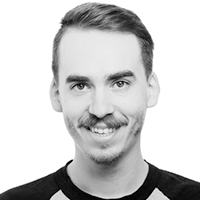
Louis-Philippe Clavet is Head of CG at FOLKS. With experience as an FX Artist, CG Supervisor, and VFX Supervisor, he is passionate about technology, knowledge-sharing, and community. He founded the Montreal Houdini User Group, speaks at international VFX events, and mentors students at NAD in Montreal.
HIVE PRESENTATIONS | DAY 3
Dmitrii Vlasenko | SideFX
Juliette Le Hir | SideFX
Jules Glegg | Soft Rains
Moritz Schwind | Entagma
Sam Taylor & Abe Coyne | Realtime UK
COPs replied: Go cliff yourself!
Explore ways to leverage COPs for HeightField generation. Start with the initial HeightField setup then layer in COP level texture generation and modifications. Continue with prop scattering and general layout for the scene in Solaris, but also use TOPs for stencil map generation on scale. Wrap everything up with the final render setup for Karma XPU with some compositing touch ups in Copernicus. To prepare for this talk, be sure to watch my SIGGRAPH HIVE talk called "Call the COPs, my Terrain is Rocking Out!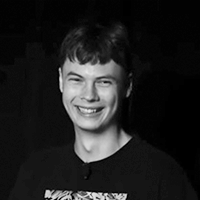
Dmitrii Vlasenko is a 3D artist, who crunches out content library material at SideFX. He attempts to download more vram on a daily basis, but he usually just segfaults. By creating pixels for the best look, Dmitrii creates the best look for his pixels. This rendering aficionado wants all of the lights, because they are never too bright for him.
How to get your monster shredded (or not)
Learn how to bring your creatures to life using new Houdini 21 CFX features. Starting from a basic KineFX rig and animation, discover how tools like Shot Sculpt, Armature Deform, or the Otis Solver (or all three combined!) can help you shape and enhance both the form and motion of your characters.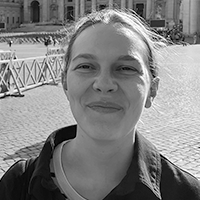
Juliette Le Hir is a Marketing FX Artist Intern at SideFX. She was first introduced to Houdini while studying animation and FX in France, since then she can't stop doing everything procedurally - from modeling to compositing. While still at school, she worked as an FX artist intern on the animation movie "Angelo dans la forêt mystérieuse" at the Parisian studio Je Suis Bien Content. Now that she is in Toronto, she misses French pastries but is slowly becoming addicted to Canadian donuts.
Volumetric destruction with hand-made charm:
Making fungus players love to clean in Ambrosia Sky
When building the destructible exo-fungus colonies that fill the world of Ambrosia Sky, we found ourselves solving several difficult problems at once. Level design that calls for colonies to creep across walls and block passages in real time. Gameplay that calls for them to be volumetric, with real physical structure you can burrow into or even collapse. And art direction that calls for all this to be accomplished with a stylized, hand-made appearance.
Explore the unique art pipeline and novel real-time techniques that deliver this immersive sci-fi clean 'em up experience - even to players on handheld hardware.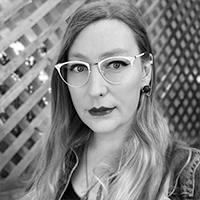
Jules Glegg is Soft Rains’ Technology Director, where she spends most of her time guiding development of gameplay systems and wrenching on simulation code. Previously she developed VFX pipelines for Netflix Originals and worked on League of Legends, Legends of Runeterra and VALORANT as a Principal Engineer at Riot Games. She is a cofounder of Trans Game Dev.
Project Violet: KineFX + MetaHumans in Production
This is an evolution of our original character-centric project. Building on the foundation of the first iteration of Violet, this new version focuses on achieving greater realism and expanded capability of the character. The project remains focused on showcasing Houdini’s rigging and animation capabilities, updated to reflect new features and efficiencies in Houdini 21. Our aim is to demonstrate a character pipeline, emphasising proceduralism while leveraging MetaHumans as a base for the character workflow.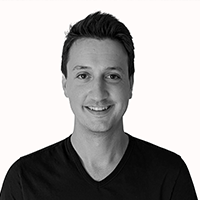
Sam Taylor has over 10 years experience in the industry and started his career at REALTIME working on a range of game trailers, cinematics, and advertising projects. A passion for technical problem solving and knowledge sharing led him to join the lecturing team at the University of Bolton to help establish the technical areas of their VFX and Animation degree course and bring Houdini into their pipeline. During his seven years at Bolton, he continued to work as a freelancer, most often for Screenclay FX on some of their film and TV projects. His experience has seen him take on roles including Generalist, FX Artist, Cloth TD, Texture, Shader and Look Dev Artist, Lead 3D Artist, CG Supervisor, Environment Asset Build and Layout and 3D Asset Technical Build. Sam later returned to REALTIME and is now the Head of Innovation and Development, where he is in charge of staff development and training, and exploring emerging technologies and techniques. He has also established REALTIME's junior training scheme (The Level Up Programme) to help new junior artists get their first job in the industry.
Abe Coyne studied Visual Effects (VFX) at Bournemouth University. During his studies, he explored Houdini’s capabilities through projects involving Pyro and Flip effects, rigid body dynamics (RBD), cloth and hair simulations via vellum, and grooming techniques. This hands-on experimentation deepened his understanding of the software and its applications in production workflows.
Since joining REALTIME through the Level Up Programme, Abe has focused on advancing his skills in rigging using the APEX workflow and producing high-quality CFX for game cinematics. His work spans hair and cloth simulations, large-scale crowd simulations, as well as research and development (R&D) projects. Abe has a passion for precision and cohesive storytelling, ensuring his contributions enhance the visual and emotional impact of the final product. Abe’s enthusiasm for emerging technologies drives his growth as an artist.
COP'ing with Pain
Learn how to use Copernicus to generate a procedural painting, inspired by reaction-diffusion solvers and impressionist techniques. Learn how to construct painterly effects with procedural brush strokes, edge detection, slope direction, solvers, and color correction to simulate oil painting textures, varnish gloss, and impasto depth. Explore an OpenCL implementation for lighting effects, reflecting on LLMs as coding facilitators, and encouraging exploration of both performance optimizations and academic opportunities.
Moritz Schwind is gonna take part in it all - Be it pixels, hardware, code or cameras. And sometimes even reassemble it. In his spare time, he likes to dabble with code and create generative artwork. He claims his early exposure to QBasic is no help at all when working in Houdini, Blender, Processing or Arduino. But it might have been what started his fascination for the boundaries of code and art. When not wreaking havoc to any intriguing devices around him, he works as a freelance Technical and Art Director. His more recent areas of interest cover the use of scientific algorithms in generative design and the application of AI in creative fields.

COMING SOON!
Worlds of Fire: The VFX of How To Train Your Dragon
Explore how Framestore’s VFX team created the sweeping environments and dynamic fire FX for How to Train Your Dragon. From the rugged landscapes of Berk to the dragons’ iconic breath of flame, VFX Supervisor Francois Lambert offers insight into the creative decisions and technical approaches that shaped the film’s atmosphere and elemental energy.
Francois Lambert's career has spanned a multitude of cinematic arenas, working with major VFX houses such as ILM and DNEG. Francois has contributed to iconic franchises, including Star Wars, Harry Potter, the Marvel Cinematic Universe, Indiana Jones, James Bond, Star Trek, and Fast and Furious. His work on Pirates of the Caribbean: Dead Man’s Chest earned him a VES award, with additional acknowledgements including three Emmy nominations, two more VES nominations, and three HPA Award nominations. In 2017, Lambert became a member of the Academy of Motion Picture Arts and Sciences (AMPAS). Most recently, Francois served as the VFX Supervisor for the critically acclaimed live-action adaptation of How to Train Your Dragon.
Houdini ComfyUI Bridge: a CG-AI toolkit
Discover how to build your own CG-AI workflows using the Houdini ComfyUI plugin, enabling seamless data exchange between Houdini and ComfyUI. In this talk, Rafael Drelich will present workflows spanning from motion capture to AI-powered image and video generation. Developed by Rafael Drelich and Anatolii Iudanov, this research demonstrates how traditional VFX pipelines and creative practices evolve alongside generative AI technologies.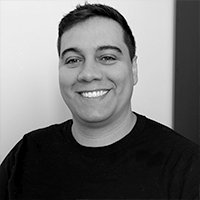
Rafael Drelich is an Effects TD, educator based in Toronto specialized in digital simulations, procedural workflows and is currently researching the intersection between Computer Graphics and Generative AI with Houdini and ComfyUI. He has previously worked at WeFX, Pixomondo, and Mr. X, contributing to high-profile projects such as "Guillermo Del Toro's Cabinet of Curiosities" (2023), "From" (2023), "Halo" (2022), "American Gods" (2021), and other notable shows.






















